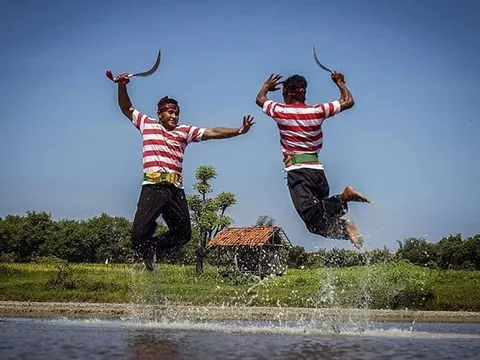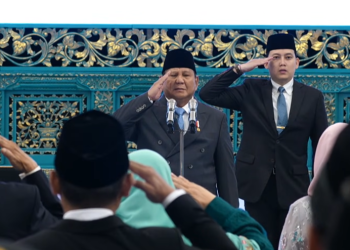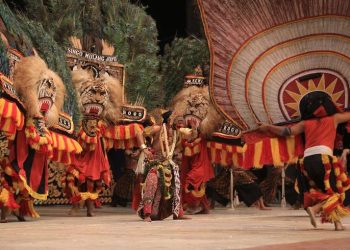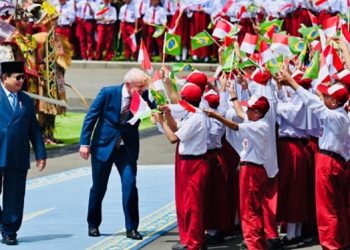Bandung, Indonesia Sentinel — Carok Madura, a traditional fight among the Madurese people of Indonesia, goes beyond mere physical confrontation, it symbolizes courage and resistance. Rooted deeply in Madurese culture, Carok has long been seen as a way to restore one’s honor and dignity in the face of perceived slights.
The term “Carok” originates from ancient Javanese (Kawi) language, meaning “fight.” Traditionally in Madura, Carok involves duels between two individuals or groups, often over disputes that are deeply personal. These conflicts typically arise from issues such as infidelity, accusations, inheritance disputes, revenge, or land ownership battles—all of which threaten the honor of those involved.
A well-known Madurese saying encapsulates the essence of Carok, “Lebbi Begus Pote Tollang E Tembeng Pote Matah,” which translates to “Better to die with honor than to live in shame.” This cultural ethos drives many Madurese to resort to Carok as a means of settling serious disputes, especially those related to family pride.
In situations of adultery or land disputes, it is not uncommon for the matter to escalate into a Carok duel, either one-on-one or in larger groups.
Carok: A Last Resort for Resolution
Carok is not just a fight but rather a last resort when peaceful means of resolving conflicts have been exhausted. The decision to engage in Carok is often fueled by the encouragement of family, neighbors, and even onlookers, who may see retreat or patience in the face of humiliation as disgraceful.
For those involved, avoiding a challenge or showing fear can be far more shameful than the risk of injury or death in combat. Victorious participants in Carok often express feelings of relief, satisfaction, and pride for having restored their dignity through the act of killing their opponent.
Two Types of Carok
There are two main forms of Carok in Madura: Nyinggai and Nyelep.
- Nyinggai involves directly challenging the opponent by confronting them at their home. This form requires extraordinary bravery and careful preparation, making it more respected within the community.
- Nyelep, on the other hand, is characterized by an ambush, attacking the opponent from behind or from the side.
While both forms of Carok can be either premeditated or spontaneous, Nyinggai is considered more honorable due to its direct nature.
The Signature Weapon: The Celurit
A distinctive feature of Carok Madura is the use of the celurit, a traditional sickle-shaped weapon that has become synonymous with Madurese identity. Originally an agricultural tool, the celurit has evolved into a symbol of masculinity and bravery. In the context of Carok, it is not merely a weapon but a cultural icon that embodies the Madurese spirit of defiance.
Most Downloaded Apps by US Gen Z in 2024, Number One was Banned in Indonesia!
Origins of the Carok Tradition
The roots of Carok date back to the Dutch colonial period in the 19th century. It is believed to have originated from the struggles of R. Sakera, a plantation overseer who resisted Dutch oppression with a celurit in hand. Despite being imprisoned for his defiance, Sakera continued his fight from behind bars, eventually becoming a folk hero. His actions inspired the Madurese to take up the celurit against colonial forces, using Carok as a means to defend their rights and honor.
During that era, Carok was viewed as a form of resistance, a way for the oppressed to stand up against injustice, even if it meant facing death. While modern perceptions often label Carok as a violent tradition, Carok in essence grounded in values like honesty and bravery, a principles held in high esteem by the Madurese people.
Despite its controversial nature, Carok Madura remains a significant part of Madurese cultural heritage, reflecting a complex blend of tradition, honor, and resistance.
(Raidi/Agung)
























